Features of localization of games on foreign markets
Under the cat you will find a longrid on the topic of game localization, prepared on the basis of an open lecture by Alexei Medov - the lead editor of Inlingo Game Localization Studio . The lecture was held in the framework of our educational program " Management of online gaming projects " in VSBI. What are we going to talk about in the article?
- about the types of localization and how to choose the most suitable for you;
- how to choose a target market and in which countries your game will be the most popular;
- about the peculiarities of different countries and the fact that you definitely need to know before you begin to localize your game;
- as well as how to organize the localization process itself.
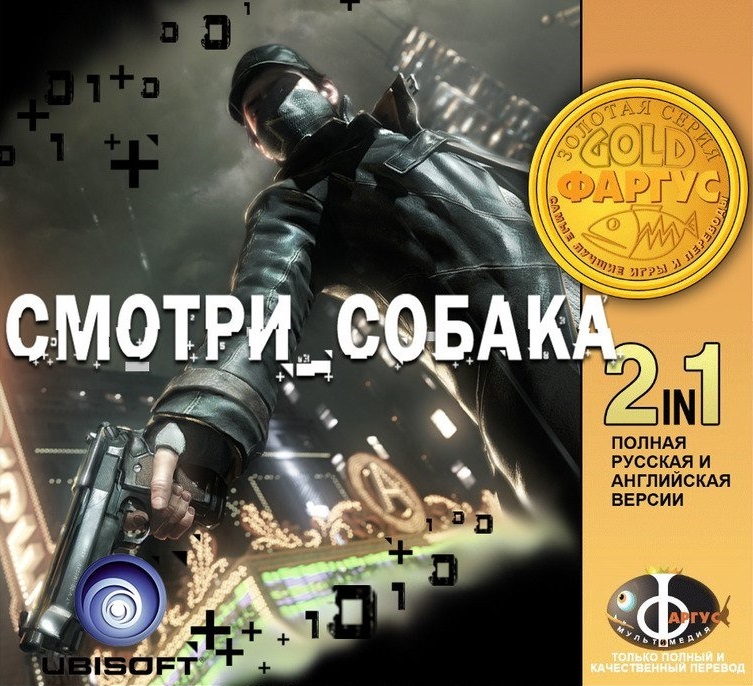
In our country, localization appears, first of all, as a translation, but, of course, it is much more than a translation. In addition to being translated into another language, the game must be adapted culturally and technically, and even, perhaps, in the legal field.
')

The most superficial is “boxed localization”
If the game is released on physical media and is sold offline, what is written on the package is localized. If it is not sold on physical media, but on any platform, then its page in the store is translated: description and screenshots. This boxed localization is limited.
Interface localization
It implies that the game will translate not only the description and the box, but also the interface, the help page, the names of the buttons - that's all. A bit strange kind of localization, which implies that you click on the "Play" button in Russian, but the plot will be completely in another language. But, nevertheless, it is quite common.
Text localization
All texts in the game are translated. Example - GTA V. The game is translated up to subtitles, so on the one hand, you can listen and try to understand the slang of African Americans in the game, but at the same time see the subtitles in Russian.
Localization with voice acting
Speech and dialogues are translated, voiced by Russian actors. If localization with voice acting is done at a good level, it is not perceived as something alien.
Graphic localization
Any game is a kind of engine, design, graphics, textures - all that is not text. For example, the inscription on the fence in the shooter. Graphic localization implies that all the inscriptions inside must be translated. These could be newspapers, store signs, some notes, and so on.
What to do with the games, the setting of which is in a certain location? For example, if the action takes place in Hong Kong, Russian signs there will look weird. In this case, it all depends on the desires of the customer and common sense. For example, if periodicals carry some meaning, they must be translated, otherwise the important point will be lost. If you play detective and some newspaper notes help in the plot, they, of course, must be translated. But at the same time, if you go in some real setting, for example, in Berlin during the Second World War, the graffiti in German does not need to be translated into Russian.
Deep localization - cultural adaptation
This is an adaptation to the culture when the game is completely redone. It remains only hardcode and mechanics. You can redo the texture, plot, dialogues, character models and on the skeleton of some engine to make a completely different game. They do this quite rarely, but still this method of localization is found, including in the portfolio of the company Inlingo Game Localization Studio, there is also such a project. This is done in cases where the game without such an adaptation is not able to be perceived by the audience and sold in any market. In particular, our project was a game about the Chinese history of the era of the Three Kingdoms, which is incomprehensible to Russians (and not only Russians). The game was completely remade: there was ancient China - it became sci-fi.
Creating games is a business, business is a profit, to get a profit, you need to sell your games. Where to sell them?

We see a breakdown by region for 2016. The huge eastern part, almost half, mainly due to China. North America, Europe - the traditional consumers of games. And a small but very ambitious Latin American market.
Define:

We look at breakdown by regions. In Asia, a lack of knowledge of the language increases from dark blue to red. We see that English is poor in China. This is a well-known fact, but we also see that in Japan, English is rather poorly known.
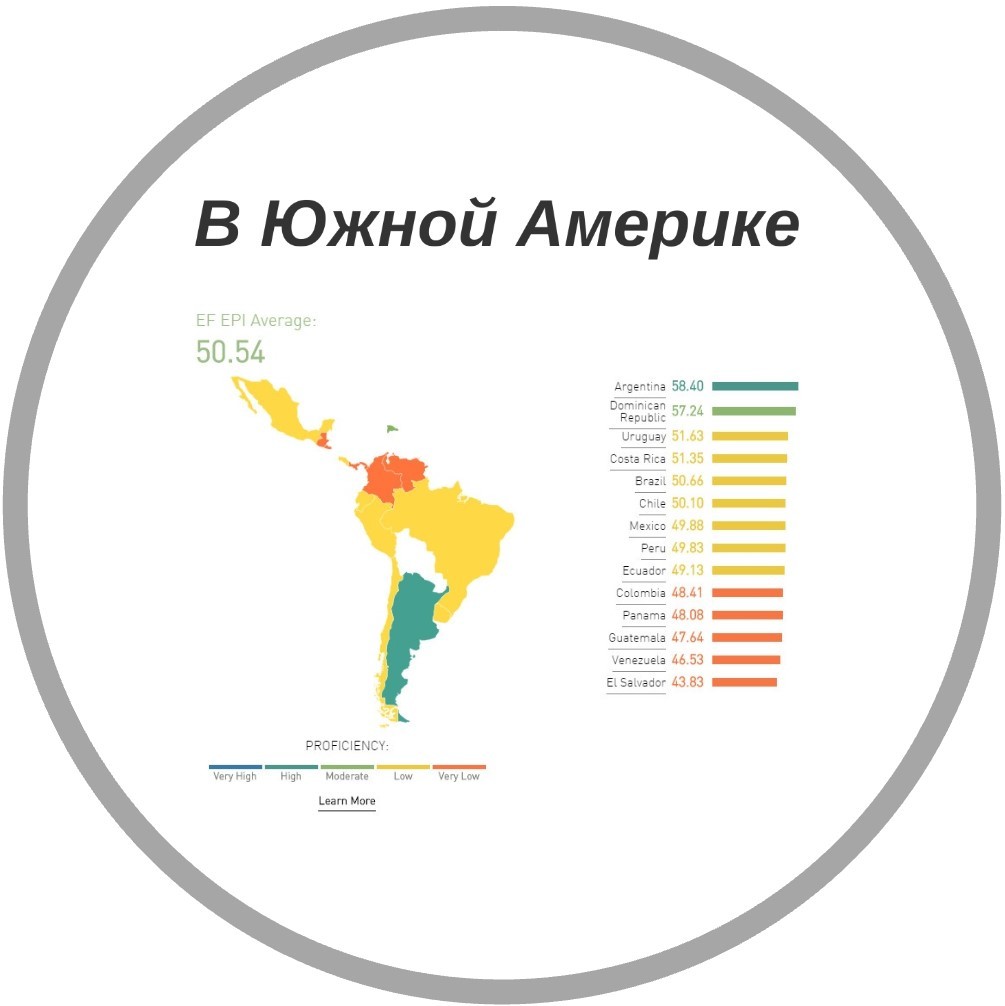
In South America in color, too, everything is quite obvious. There are a lot of people in Brazil, and they have pretty bad English too. So the Portuguese Brazilian is also a good option.
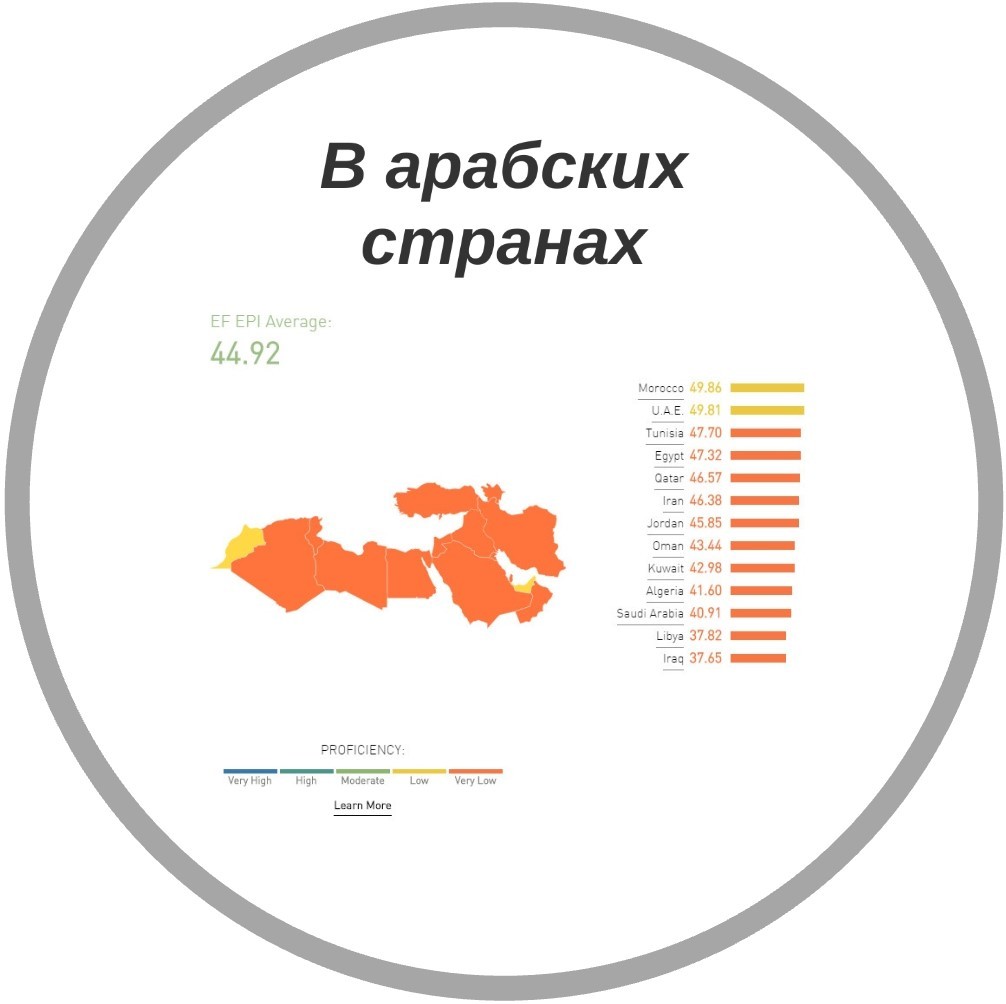
In Arab countries, there is oil, money, but, apparently, there are no English teachers. So, if you want to translate games into Arabic, this may not be such a bad idea.
Naturally, it depends on your budget and on your ambitions: whether you want to capture the whole world at once or gradually, bit by bit, earning the money you need.
Interfaces and design approach are quite different in different regions. For example, the Chinese and Japanese approach to design due to its typography has a very dense and rich interface and very small pictures. If you go to any Japanese site, you will see a dense brick of text, because the hieroglyphs are written without spaces. The interface itself looks like a web 2.0 - without any frills.
The Arabic interface is a separate story altogether. Everything is written from right to left, respectively, everything is located in the same way. We are not used to this. The interface itself is similar to Western, but it makes a very strange impression.
The Vietnamese are written in normal letters, and the interface itself is, in fact, western.
There are games in which there are practically no words, it is intuitively clear what to do. And if it is not clear, then there is an icon that explains everything without words. In order for the user, entering the store, to understand that everything in this game is understandable without words, it is necessary that he first read about it. Therefore it is necessary to translate the description. In such cases, a box localization will suffice.
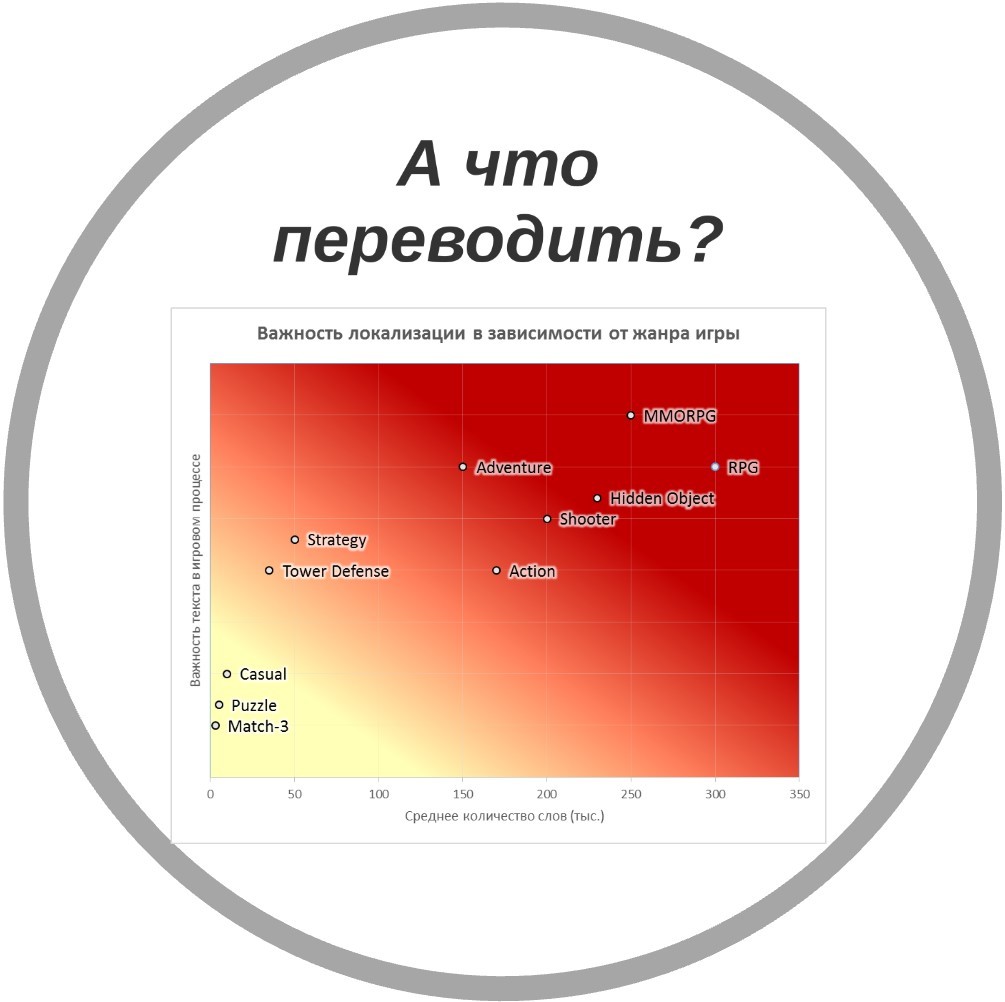
In this graph, the X-axis is the average number of words, and the Y-axis is the importance of the text in the game process. Some small boxed localization is suitable for casual games: puzzles, match-3 , the situation with tower defense and strategies without a special sophisticated plot is more complicated, action, adventures, shooters go further. In the same place there was a rather popular genre - hidden object . Everything is clear here: if you do not translate a word denoting an item that a player needs to find, he will never find it. Well, there are a lot of words in the MMORPG , and they are always important for the plot, so they definitely need to be translated.
Everywhere love MMORPG, shooters, MOBA. But there are exceptions.
For us, Japan is still a black box, because the games played by the Japanese are something with something. For example, besides the wild graphic style, they love Date sims - dating simulators . Required anime and content 18+.
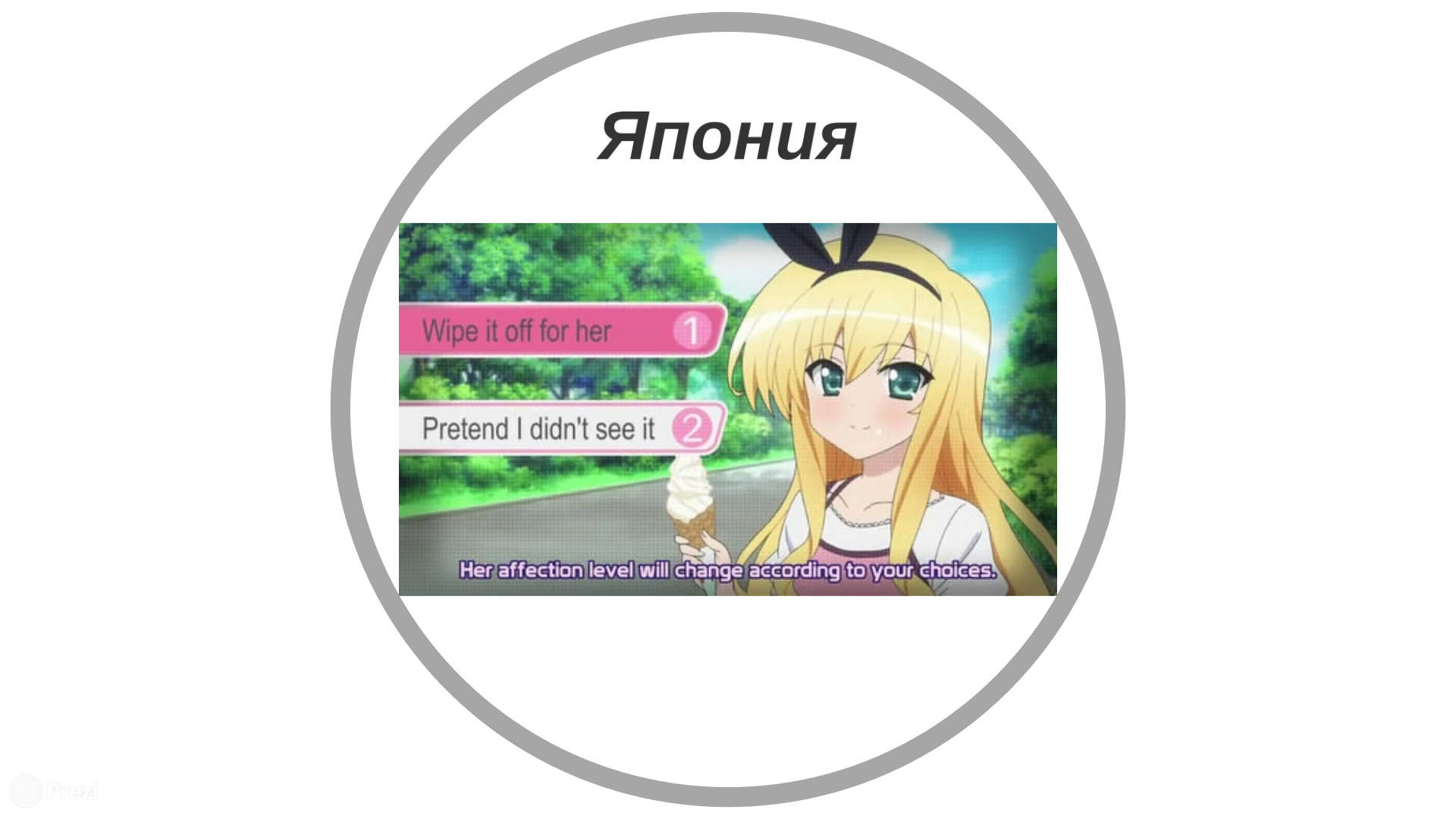
This is a typical screenshot from a Japanese game. More Japanese love big robots. I have an example when a Russian developer made a game about them, and she went very well in Japan.
In China, they love the same thing as all over the world, but so that it is Chinese. This is the result of the systematic policy of the Chinese government to popularize its own culture. If the game has Chinese mythology, literature, history - you are guaranteed success.
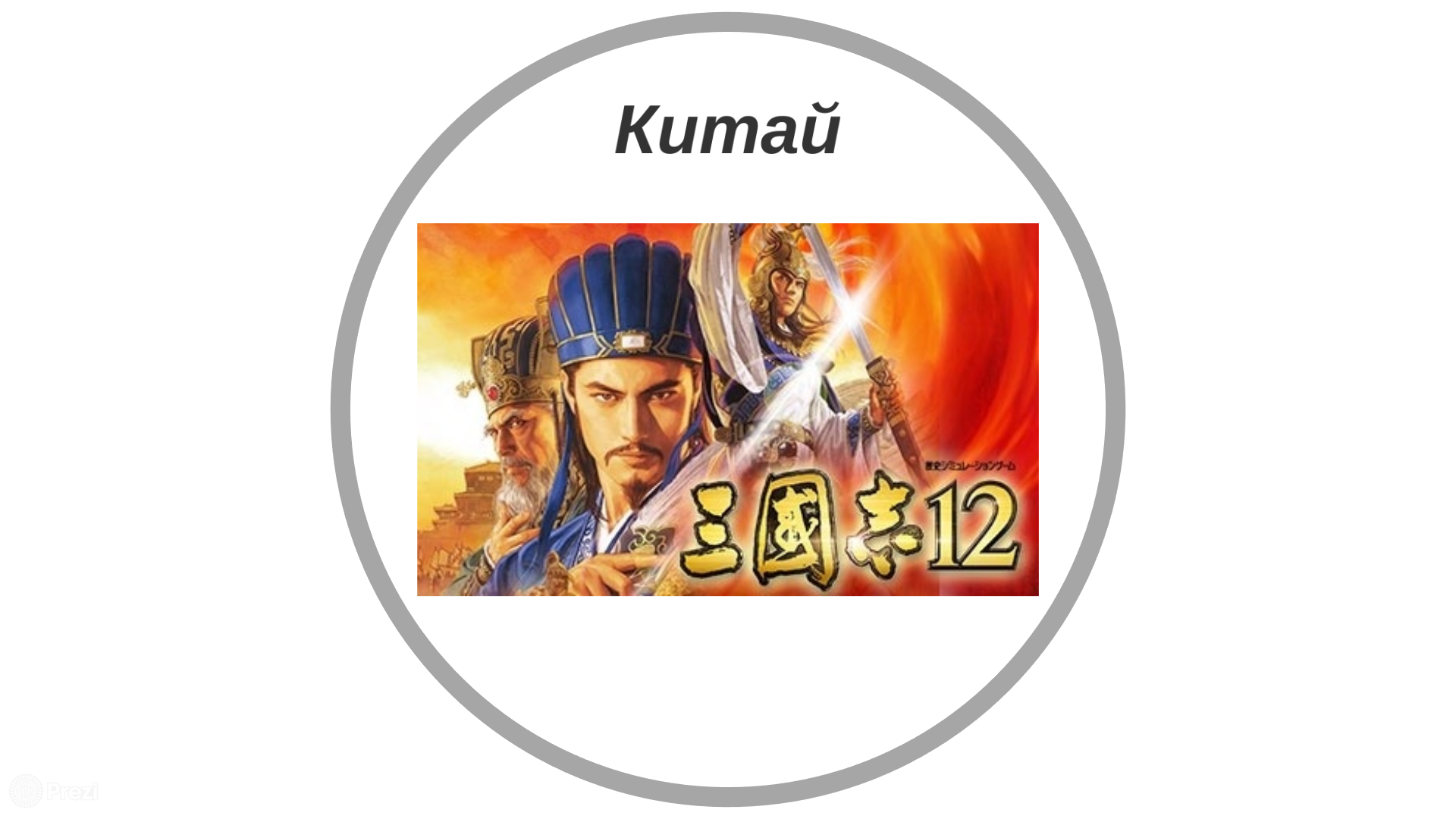
In Germany, very much like simulators, and simulators of everything. Come up with the most boring profession in the world, make a simulator, send it to Germany - and there they will buy it. And if you decide to make a simulator, translate it into German.

Here you have a subway driver simulator. If in Need for Speed you drive on different tracks, here you push the buttons back and forth and open the doors.
Need to schedule localization. In the game there are so many moments in which you can make a mistake at the very beginning. You need to select the languages into which you will translate the game. When developing an interface, it is desirable to take into account the features of these languages. One word in German can be longer than the whole sentence in other languages. Russian language with the number of characters less than in English, the length will be more.
To simplify the stage of graphic localization, do not stitch anything into the graphics. Because if you make a picture with an inscription, then you will have to get it from there, decrypt, translate, redraw and paste it back so that nothing breaks.
Formatting and functional tags. Make more varied tags that will help you insert all sorts of variables. For example, variables that will be responsible for the design, for the insertion of objects (placeholder), which will help you to insert figures, change the gender of the talking character, and so on.
What is the preparation for localization? Lokkit is a tracing paper from the English localization kit .
What does Locke include? In the standard version, this is a table with different columns:
ID - helps to understand what the context is; characters, pictures, original. If necessary, you add a comment.
Everyone knows that without a technical task is very difficult. What you need to specify in the technical specifications for localizers? The style (formal / informal, censorship / obscene language), the formality of addressing the player (you, you), the audience (if we do not know that this game is for children, we will translate it as a game for adults, and it will be awkward) forbidden characters and other technical limitations (for example, it happens that you cannot put straight quotes or long dashes, and vice versa) - you should talk about this in advance so that everything works for you.
Glossary is a list of game terms, game realities, which should be called uniformly. The glossary most often includes items, character names, quest names, spells, and everything that should have only one name. This will help avoid such situations when you are told in the task “Find the Sword of Truth”, and the object is actually called the “Blade of Truth”. One mismatch of the term can lead to the fact that your game will become impassable.
When we have decided on everything else, we need to remember that when entering other markets there is always a specificity (cultural and legal). Censorship is such a terrible thing that does not depend on anyone and is established by the government.
It is customary to single out 4 criteria according to which a game can be banned or postponed until the release of a patch. These are generally unpleasant situations that lead to financial and reputational risks.
Story. Each country has its own alternative history. This is an understanding of history in general and some controversial points.
Example: Age of Empires , the well-known game of 1997. It was banned in Korea because of an episode in which the Japanese army invades Korea and effortlessly captures the entire Korean peninsula. Historians confirm the historical authenticity of this episode, and in the game everything is reflected as plausibly as possible. The Koreans decided that it was embarrassing and shameful, and suggested that they not only surrendered, but fought bloody battles. I had to make a patch, which showed a strong Korean army, bravely fighting with the Japanese.
The second example is Six Days in Fallujah. The action takes place in Iraq in 2004. There was a very ambiguous moment from the point of view of history connected with the participation of local residents and the losses in this war. We decided that this is not necessary, and banned this game.
Religion is always a rather slippery topic.
An example is Kakuto Chojin . Somehow, a fragment from the Quran was included in the voice acting. All Islamic countries have naturally banned this game, and because of one moment all the work went down the drain.
Game Resistance: Fall of Man , shooter 2006. It turned out that the interior of Manchester Cathedral was recreated in this game in the smallest detail. The game is quite brutal, there is a lot of violence in it. Representatives of the Church of England were outraged and published a package of recommendations on how to change the game. In response, Sony had to apologize, although they left the cathedral in the game, insisting that the events in the game were fictional.
Political correctness is a complex issue, there is a lot of controversy over this now. What precedents were on this basis?
Resident Evil 5 - the famous franchise. It would seem that the Japanese never had problems with political correctness, but in the video on E3 they showed the protagonist, who is in Africa, fighting with zombies. There was a village with locals who were all black. And it turned out that in this short clip a white man shoots black men. Developers had to apologize, but the sediment remained.
An example of a mobile game. Pocket God is a god simulator in which you can control a small island. There are some things typical of the aborigines, such as we imagine them to be: with totem figures and palm leaves. And in this game, you can scoff at the natives in different ways: fry them in a volcano, drown, crush ... Public organizations in Australia and Oceania stated that the game exploits stereotypes about the aborigines and racist in general.
Geopolitics. This is most often China, because this country has unresolved territorial disputes with Tibet and Taiwan. And this leads to the fact that all sorts of games prohibit. We are not talking about strategies, for example, Taiwan and China are different countries, although until 1949 they were really different countries. It can be a variety of games. For example, a football manager, in which were the national teams of China and Taiwan under their state flags.
It is very difficult not to step on a rake, entering a specific market, because there are really a lot of factors to be taken into account.
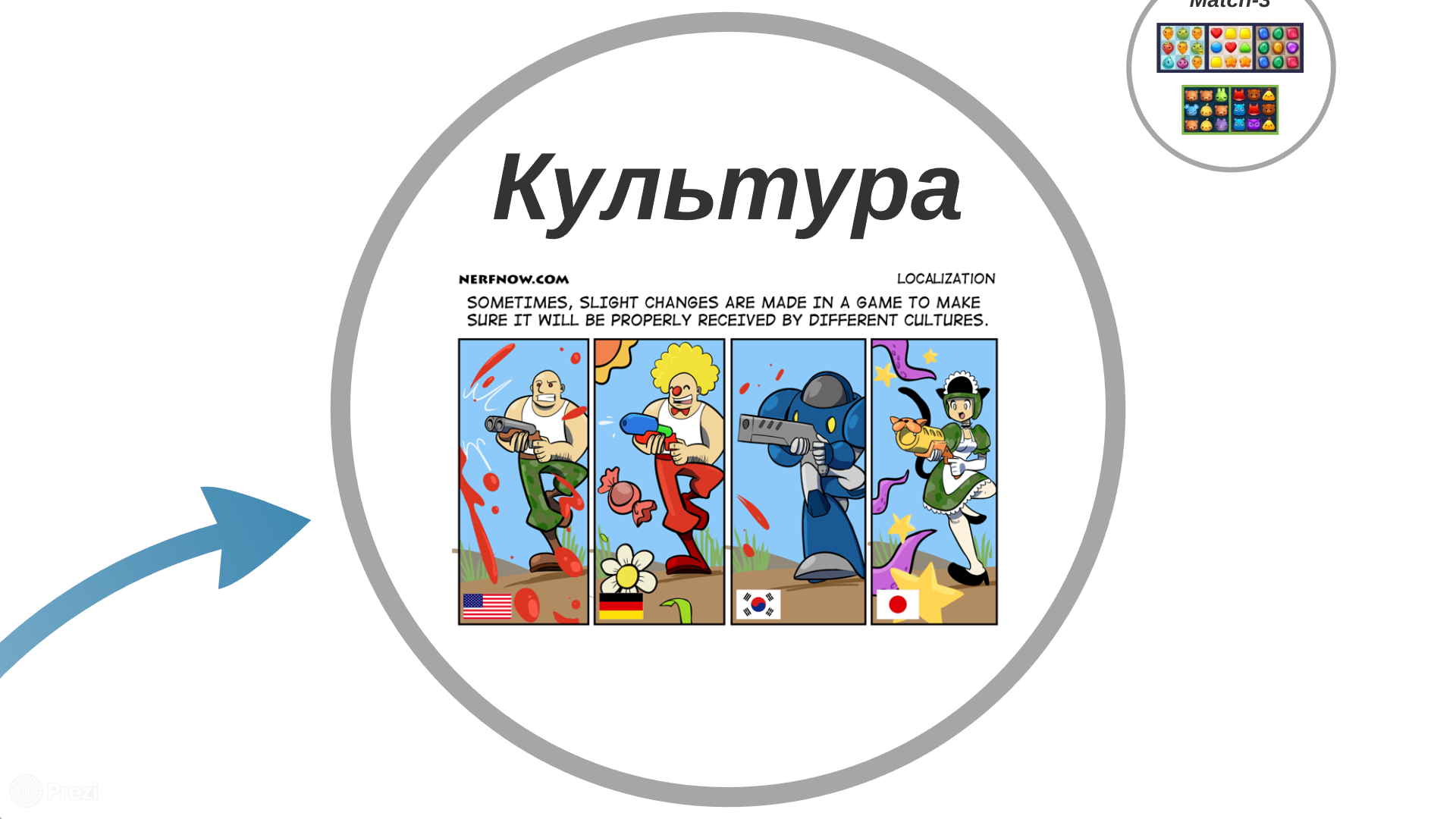
The fact that at the legislative level you will not be banned, but people may misunderstand you. What happens to the game in different countries is shown in this old picture. A good 90s Hollywood action movie is a stereotypical American game.
In general, in America, everything is fine with censorship, except for some hysterical lawyers and societies of concerned conservative mothers who object to violence in games.
Germany suffers greatly from censors, and many games are banned from them, or are not on sale. All Nazi symbols and symbols that even vaguely resemble the Third Reich are prohibited there.
Korea is the stereotypical e-sports leader, with its Starcraft champions.
And about Japan, we have already spoken.
In general, this picture fully reflects reality.
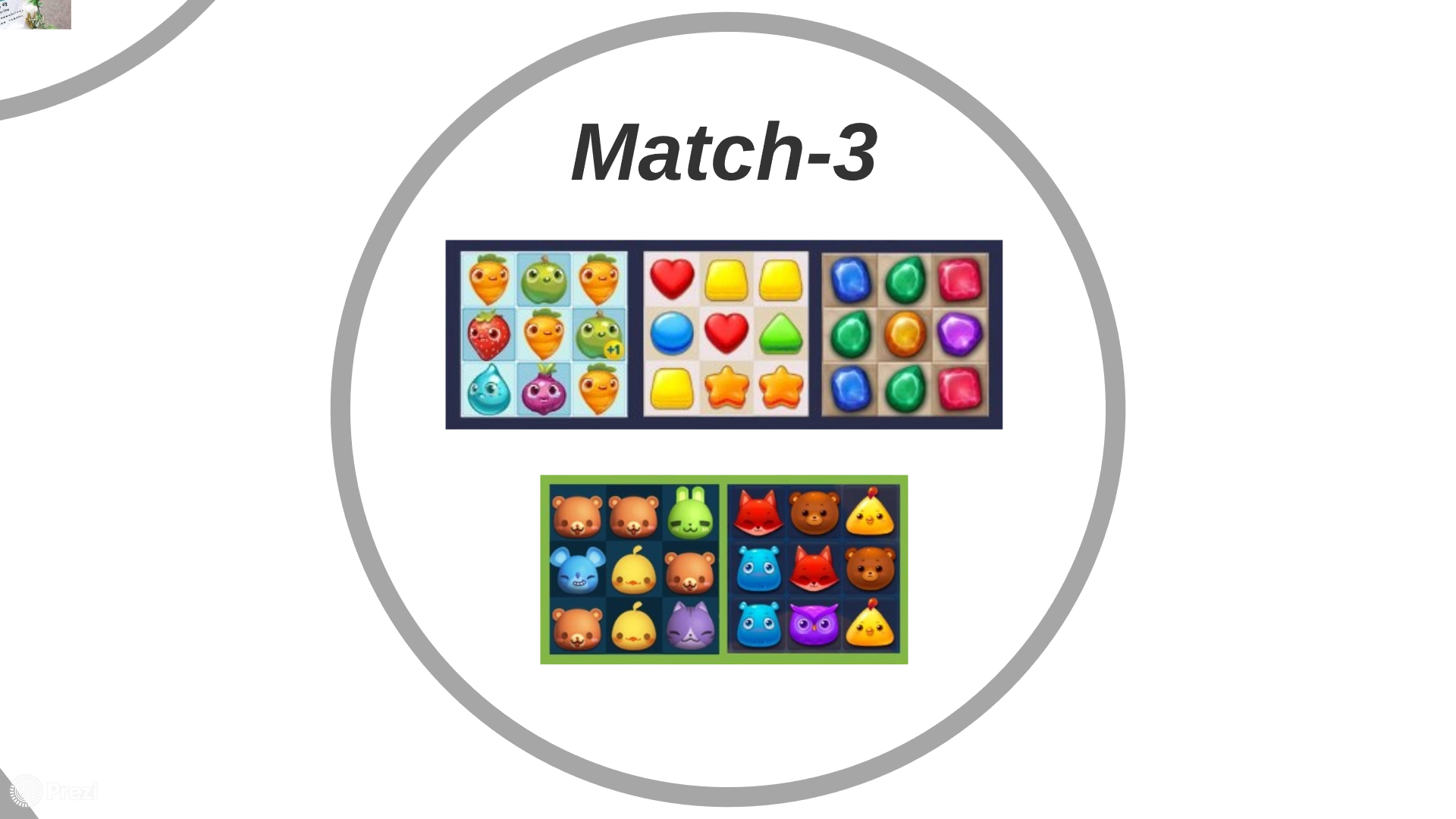
Cultural characteristics can even manifest themselves in genres such as match-3 . Above you see the western variant, and below the eastern one. The Chinese do not really perceive diamonds, sweets, fruits, and so on. If someone tried Chinese candy, knows that they are not sweet. As much as spicy food is used to them, but not for us, our sweets are simply not tasty for the Chinese. Therefore, due to the fact that the Chinese do not eat sweets, they do not cause them any emotions. Oddly enough, this feature is reflected in match-3 . They have all sorts of cute animals instead of sweets.
China is a very specific country, both by preferences and by culture. As mentioned above, they are very fond of their history and not very fond of Western. There was a case with a fantasy strategy, which had to add a whole team of heroes based on Chinese mythology.
The Chinese are not like in the West: there is no Christmas, New Year at another time, and all the holidays do not coincide with ours, both in attributes and in time. The Chinese are very offended by the West when we celebrate the Chinese New Year on our New Year. When we place somewhere the symbols of their horoscope (the rooster, for example), we chase away their sacred animal of the previous year earlier than this.
A good example: Overwatch made two different events: a European Christmas with a European entourage, even disguising a Chinese character. And then, at the onset of the Chinese New Year, they changed the entourage for Chinese. This is a great example of how to do it.
Attitude to fireworks: we have fireworks often present in festive events. In Russia, they are associated with the New Year. If we translate the game into English and launch such an action with fireworks, the Americans probably won't understand it. They have the main reason for fireworks - July 4, on Independence Day.
A case from our practice: in one of the texts for the event there were tangerines as such a symbol of the New Year for the Russians. Our American translator was very surprised, and the tangerines had to be replaced with cinnamon.

Most flowers in China are associated with the elements.
The LGBT symbol is a six-color rainbow. If we treat it suspiciously, then in China the rainbow does not cause any such associations. The most interesting thing is that they basically do not associate a rainbow with anything at all, so the rainbow in the game will not work in any sense. In the culture of China there is no public censure of homosexuality, but no one specifically advertises this. If our topic of homosexuality causes a stormy response and public response, then in China there is no such thing.
When translating the Chinese game into Russian, I personally met with a description of the fact that you have a slave in the game, with whom you go to a common shower room and specially drop soap. It was very unexpected to see in the Chinese game, but nevertheless, such things are found. In the Russian version, of course, we had to soften this story.
Also in China, they normally relate to the topics of flatulence, feces and other things, all jokes on this subject are considered quite childish.
A separate and very interesting topic is left-sided interfaces .
In the Arab countries, everyone writes from right to left. This puts forward certain technical requirements for how the interface should look, and everything changes quite dramatically. Simple mirroring is not enough. Because of the direction of the letter, the undo button is mirrored, that is, redo and undo change functions. Also, the flow of time, processes and lines of accumulation, for example, money or experience, go in the opposite direction. But at the same time the hands of the clock spin in the usual way. The strips of the audio and video players go from left to right, as they symbolize the movement of the film, the same applies to the previous and next track buttons, and also to play - everything is like in Europe. Icons with a magnifying glass or a pencil are also not mirrored, because, despite the writing, the Arabs are mostly right-handed.
What is curious, in the same China or Japan, where the traditional letter goes from right to left and still from top to bottom, writing from top to bottom in game interfaces is practically not used.

Remember, from a bad game, even the best localization will not do good, but poor localization will surely ruin any game.
We remind you that in November and in May, new streams of the Internet Gaming Management Projects educational program are launched at VSBI.
- about the types of localization and how to choose the most suitable for you;
- how to choose a target market and in which countries your game will be the most popular;
- about the peculiarities of different countries and the fact that you definitely need to know before you begin to localize your game;
- as well as how to organize the localization process itself.

Localization is translation and adaptation.
In our country, localization appears, first of all, as a translation, but, of course, it is much more than a translation. In addition to being translated into another language, the game must be adapted culturally and technically, and even, perhaps, in the legal field.
')

Localization levels
The most superficial is “boxed localization”
If the game is released on physical media and is sold offline, what is written on the package is localized. If it is not sold on physical media, but on any platform, then its page in the store is translated: description and screenshots. This boxed localization is limited.
Interface localization
It implies that the game will translate not only the description and the box, but also the interface, the help page, the names of the buttons - that's all. A bit strange kind of localization, which implies that you click on the "Play" button in Russian, but the plot will be completely in another language. But, nevertheless, it is quite common.
Text localization
All texts in the game are translated. Example - GTA V. The game is translated up to subtitles, so on the one hand, you can listen and try to understand the slang of African Americans in the game, but at the same time see the subtitles in Russian.
Localization with voice acting
Speech and dialogues are translated, voiced by Russian actors. If localization with voice acting is done at a good level, it is not perceived as something alien.
Graphic localization
Any game is a kind of engine, design, graphics, textures - all that is not text. For example, the inscription on the fence in the shooter. Graphic localization implies that all the inscriptions inside must be translated. These could be newspapers, store signs, some notes, and so on.
What to do with the games, the setting of which is in a certain location? For example, if the action takes place in Hong Kong, Russian signs there will look weird. In this case, it all depends on the desires of the customer and common sense. For example, if periodicals carry some meaning, they must be translated, otherwise the important point will be lost. If you play detective and some newspaper notes help in the plot, they, of course, must be translated. But at the same time, if you go in some real setting, for example, in Berlin during the Second World War, the graffiti in German does not need to be translated into Russian.
Deep localization - cultural adaptation
This is an adaptation to the culture when the game is completely redone. It remains only hardcode and mechanics. You can redo the texture, plot, dialogues, character models and on the skeleton of some engine to make a completely different game. They do this quite rarely, but still this method of localization is found, including in the portfolio of the company Inlingo Game Localization Studio, there is also such a project. This is done in cases where the game without such an adaptation is not able to be perceived by the audience and sold in any market. In particular, our project was a game about the Chinese history of the era of the Three Kingdoms, which is incomprehensible to Russians (and not only Russians). The game was completely remade: there was ancient China - it became sci-fi.
Where is localization needed? How to choose a target market?
Creating games is a business, business is a profit, to get a profit, you need to sell your games. Where to sell them?

We see a breakdown by region for 2016. The huge eastern part, almost half, mainly due to China. North America, Europe - the traditional consumers of games. And a small but very ambitious Latin American market.
Define:
- Where a lot of players. To select a target market, you need to determine where there are a lot of players. A large number of people do not necessarily entail a large number of players. There are many people in Bangladesh, but they are all very poor and they don’t have the devices to play games on them.
- Where a lot of money. In Bangladesh, a little money, but in Japan, Korea, China - quite a lot.
- Where English is bad. One of the key factors, because with access to the international market, people first of all translate their games into English. English is the language of international communication, and without it it is simply impossible to translate into some languages. It is almost unreal to find translators from Russian into some rare language in the gaming field.
- Where few competitors. This is a very important factor that people often forget about.

We look at breakdown by regions. In Asia, a lack of knowledge of the language increases from dark blue to red. We see that English is poor in China. This is a well-known fact, but we also see that in Japan, English is rather poorly known.

In South America in color, too, everything is quite obvious. There are a lot of people in Brazil, and they have pretty bad English too. So the Portuguese Brazilian is also a good option.

In Arab countries, there is oil, money, but, apparently, there are no English teachers. So, if you want to translate games into Arabic, this may not be such a bad idea.
What languages to translate?
Naturally, it depends on your budget and on your ambitions: whether you want to capture the whole world at once or gradually, bit by bit, earning the money you need.
- Gentlemen's set - EFIGS - English, French, Italian, German, Spanish (European languages). Why Europe was not in the previous paragraphs about the regions? Because there is traditionally well enough English. But because of the high competition, games translated into the local language are selling much better.
- The Asian languages are the three most popular: Korean, Chinese, and Japanese.
- Turkish language. Turkey is a progressive country, there are a lot of people playing and paying there.
- Arabic.
- Other languages. Take, say, Vietnamese. The Vietnamese market is very interesting: there are many users there, the market is growing, they like to play there, the users are very loyal and do not know English. There is also its own specifics, therefore, when entering the Vietnamese market, you should remember two things. Vietnamese are very fond of beautiful interfaces. The game content may not be very interesting, but from a visual point of view, each pixel should be verified in it. Also, the Vietnamese are very fond of Chinese history and at the same time do not know Chinese. Therefore, if you do something in the Chinese theme with a cool interface and translate everything into Vietnamese, your game has very big chances to fly up in Vietnam.
Interfaces and design approach are quite different in different regions. For example, the Chinese and Japanese approach to design due to its typography has a very dense and rich interface and very small pictures. If you go to any Japanese site, you will see a dense brick of text, because the hieroglyphs are written without spaces. The interface itself looks like a web 2.0 - without any frills.
The Arabic interface is a separate story altogether. Everything is written from right to left, respectively, everything is located in the same way. We are not used to this. The interface itself is similar to Western, but it makes a very strange impression.
The Vietnamese are written in normal letters, and the interface itself is, in fact, western.
What to translate?
There are games in which there are practically no words, it is intuitively clear what to do. And if it is not clear, then there is an icon that explains everything without words. In order for the user, entering the store, to understand that everything in this game is understandable without words, it is necessary that he first read about it. Therefore it is necessary to translate the description. In such cases, a box localization will suffice.

In this graph, the X-axis is the average number of words, and the Y-axis is the importance of the text in the game process. Some small boxed localization is suitable for casual games: puzzles, match-3 , the situation with tower defense and strategies without a special sophisticated plot is more complicated, action, adventures, shooters go further. In the same place there was a rather popular genre - hidden object . Everything is clear here: if you do not translate a word denoting an item that a player needs to find, he will never find it. Well, there are a lot of words in the MMORPG , and they are always important for the plot, so they definitely need to be translated.
What do they love in different countries?
Everywhere love MMORPG, shooters, MOBA. But there are exceptions.
Japan
For us, Japan is still a black box, because the games played by the Japanese are something with something. For example, besides the wild graphic style, they love Date sims - dating simulators . Required anime and content 18+.

This is a typical screenshot from a Japanese game. More Japanese love big robots. I have an example when a Russian developer made a game about them, and she went very well in Japan.
China
In China, they love the same thing as all over the world, but so that it is Chinese. This is the result of the systematic policy of the Chinese government to popularize its own culture. If the game has Chinese mythology, literature, history - you are guaranteed success.

Germany
In Germany, very much like simulators, and simulators of everything. Come up with the most boring profession in the world, make a simulator, send it to Germany - and there they will buy it. And if you decide to make a simulator, translate it into German.

Here you have a subway driver simulator. If in Need for Speed you drive on different tracks, here you push the buttons back and forth and open the doors.
What you need to do before the release?
Need to schedule localization. In the game there are so many moments in which you can make a mistake at the very beginning. You need to select the languages into which you will translate the game. When developing an interface, it is desirable to take into account the features of these languages. One word in German can be longer than the whole sentence in other languages. Russian language with the number of characters less than in English, the length will be more.
To simplify the stage of graphic localization, do not stitch anything into the graphics. Because if you make a picture with an inscription, then you will have to get it from there, decrypt, translate, redraw and paste it back so that nothing breaks.
Formatting and functional tags. Make more varied tags that will help you insert all sorts of variables. For example, variables that will be responsible for the design, for the insertion of objects (placeholder), which will help you to insert figures, change the gender of the talking character, and so on.
Lokkit
What is the preparation for localization? Lokkit is a tracing paper from the English localization kit .
- Formats in which localizers are used to receiving material for translation: xls, txt, xml, html, csv, java, json . A set of these formats is associated with the fact that it is with them that special programs for translation work.
- Segmentation. No need to split up the proposal into several segments. Example from Korean: Korean sentence always ends with a verb. If you split the Russian sentence into several parts, it will be very difficult to translate.
- Context / Illustrations. It is very important to give translators a context. When you have written "pipe" - it is not clear what you mean: trombone or plumbing.
- Character limits. Make them bigger. They are never enough.
- Filters and sorting. Localizers are people with experience, and you should not try to help them somehow by filtering and sorting text or deleting repetitions. Just give it to them in a logical sequence.
- Conversations with the speakers and the biography of the characters.
For example, in Korea, a very rigid social hierarchy. And if your game involves the communication of characters, it is very important who they are with each other, as well as their gender, age, social status, family ties. Suppose you take some simple game where two characters are talking. No Korean will be able to translate it without information about who these characters are to each other.
What does Locke include? In the standard version, this is a table with different columns:
ID - helps to understand what the context is; characters, pictures, original. If necessary, you add a comment.
Terms of Reference
Everyone knows that without a technical task is very difficult. What you need to specify in the technical specifications for localizers? The style (formal / informal, censorship / obscene language), the formality of addressing the player (you, you), the audience (if we do not know that this game is for children, we will translate it as a game for adults, and it will be awkward) forbidden characters and other technical limitations (for example, it happens that you cannot put straight quotes or long dashes, and vice versa) - you should talk about this in advance so that everything works for you.
Glossary
Glossary is a list of game terms, game realities, which should be called uniformly. The glossary most often includes items, character names, quest names, spells, and everything that should have only one name. This will help avoid such situations when you are told in the task “Find the Sword of Truth”, and the object is actually called the “Blade of Truth”. One mismatch of the term can lead to the fact that your game will become impassable.
Censorship
When we have decided on everything else, we need to remember that when entering other markets there is always a specificity (cultural and legal). Censorship is such a terrible thing that does not depend on anyone and is established by the government.
It is customary to single out 4 criteria according to which a game can be banned or postponed until the release of a patch. These are generally unpleasant situations that lead to financial and reputational risks.
Story. Each country has its own alternative history. This is an understanding of history in general and some controversial points.
Example: Age of Empires , the well-known game of 1997. It was banned in Korea because of an episode in which the Japanese army invades Korea and effortlessly captures the entire Korean peninsula. Historians confirm the historical authenticity of this episode, and in the game everything is reflected as plausibly as possible. The Koreans decided that it was embarrassing and shameful, and suggested that they not only surrendered, but fought bloody battles. I had to make a patch, which showed a strong Korean army, bravely fighting with the Japanese.
The second example is Six Days in Fallujah. The action takes place in Iraq in 2004. There was a very ambiguous moment from the point of view of history connected with the participation of local residents and the losses in this war. We decided that this is not necessary, and banned this game.
Religion is always a rather slippery topic.
An example is Kakuto Chojin . Somehow, a fragment from the Quran was included in the voice acting. All Islamic countries have naturally banned this game, and because of one moment all the work went down the drain.
Game Resistance: Fall of Man , shooter 2006. It turned out that the interior of Manchester Cathedral was recreated in this game in the smallest detail. The game is quite brutal, there is a lot of violence in it. Representatives of the Church of England were outraged and published a package of recommendations on how to change the game. In response, Sony had to apologize, although they left the cathedral in the game, insisting that the events in the game were fictional.
Political correctness is a complex issue, there is a lot of controversy over this now. What precedents were on this basis?
Resident Evil 5 - the famous franchise. It would seem that the Japanese never had problems with political correctness, but in the video on E3 they showed the protagonist, who is in Africa, fighting with zombies. There was a village with locals who were all black. And it turned out that in this short clip a white man shoots black men. Developers had to apologize, but the sediment remained.
An example of a mobile game. Pocket God is a god simulator in which you can control a small island. There are some things typical of the aborigines, such as we imagine them to be: with totem figures and palm leaves. And in this game, you can scoff at the natives in different ways: fry them in a volcano, drown, crush ... Public organizations in Australia and Oceania stated that the game exploits stereotypes about the aborigines and racist in general.
Geopolitics. This is most often China, because this country has unresolved territorial disputes with Tibet and Taiwan. And this leads to the fact that all sorts of games prohibit. We are not talking about strategies, for example, Taiwan and China are different countries, although until 1949 they were really different countries. It can be a variety of games. For example, a football manager, in which were the national teams of China and Taiwan under their state flags.
It is very difficult not to step on a rake, entering a specific market, because there are really a lot of factors to be taken into account.

Culture
The fact that at the legislative level you will not be banned, but people may misunderstand you. What happens to the game in different countries is shown in this old picture. A good 90s Hollywood action movie is a stereotypical American game.
In general, in America, everything is fine with censorship, except for some hysterical lawyers and societies of concerned conservative mothers who object to violence in games.
Germany suffers greatly from censors, and many games are banned from them, or are not on sale. All Nazi symbols and symbols that even vaguely resemble the Third Reich are prohibited there.
Korea is the stereotypical e-sports leader, with its Starcraft champions.
And about Japan, we have already spoken.
In general, this picture fully reflects reality.

Cultural characteristics can even manifest themselves in genres such as match-3 . Above you see the western variant, and below the eastern one. The Chinese do not really perceive diamonds, sweets, fruits, and so on. If someone tried Chinese candy, knows that they are not sweet. As much as spicy food is used to them, but not for us, our sweets are simply not tasty for the Chinese. Therefore, due to the fact that the Chinese do not eat sweets, they do not cause them any emotions. Oddly enough, this feature is reflected in match-3 . They have all sorts of cute animals instead of sweets.
China is a very specific country, both by preferences and by culture. As mentioned above, they are very fond of their history and not very fond of Western. There was a case with a fantasy strategy, which had to add a whole team of heroes based on Chinese mythology.
The Chinese are not like in the West: there is no Christmas, New Year at another time, and all the holidays do not coincide with ours, both in attributes and in time. The Chinese are very offended by the West when we celebrate the Chinese New Year on our New Year. When we place somewhere the symbols of their horoscope (the rooster, for example), we chase away their sacred animal of the previous year earlier than this.
A good example: Overwatch made two different events: a European Christmas with a European entourage, even disguising a Chinese character. And then, at the onset of the Chinese New Year, they changed the entourage for Chinese. This is a great example of how to do it.
Attitude to fireworks: we have fireworks often present in festive events. In Russia, they are associated with the New Year. If we translate the game into English and launch such an action with fireworks, the Americans probably won't understand it. They have the main reason for fireworks - July 4, on Independence Day.
A case from our practice: in one of the texts for the event there were tangerines as such a symbol of the New Year for the Russians. Our American translator was very surprised, and the tangerines had to be replaced with cinnamon.

Colors in China and other features
Most flowers in China are associated with the elements.
- RED : The most favorite color in China is red. The color is very popular, but it is festive. Red color in China is associated with fire, but not with destructive power, as in Europe, but with creative one. Many people think that if everything is done in red, then the Chinese will immediately like it. Yes, but too much red is perceived by the Chinese as overkill. It is like you will play a game where all year round everything will be connected with Christmas.
- GREEN : There are many nuances that you can spend a lot of time studying. For example, a green hat. It would seem that it could be bad. But in China, a green hat is almost a forbidden item of clothing. Because in the Middle Ages, green hats were worn by the husbands of prostitutes. A green hat on a man means that his wife is cheating on him. Those who like to celebrate St. Patrick's Day in a green hat in China will not understand. For the same reason, it is not customary for men to donate any green items of clothing worn close to their heads, such as scarves.
- WHITE : The mourning color in China is white. No need to wrap gifts in white packaging, if it happens in the Chinese game, because they are associated with mourning. And brides for the Chinese game need to wear red.
- YELLOW : Yellow color in China means pornography. The yellow press is pornographic, the yellow clips are pornographic, the yellow web is porn sites. This color must be treated very carefully. But yellow is not only pornographic, but also an imperial color. It symbolizes the power of the usurper and tyranny.
- Qing : There is a special color that does not have a name with us. It is called qing, it is the color of jade. If you know that in Chinese culture, this color is very loved and respected, you can gently insert it into your game, and it will be a success. This color is associated with nobility and wealth.
The LGBT symbol is a six-color rainbow. If we treat it suspiciously, then in China the rainbow does not cause any such associations. The most interesting thing is that they basically do not associate a rainbow with anything at all, so the rainbow in the game will not work in any sense. In the culture of China there is no public censure of homosexuality, but no one specifically advertises this. If our topic of homosexuality causes a stormy response and public response, then in China there is no such thing.
When translating the Chinese game into Russian, I personally met with a description of the fact that you have a slave in the game, with whom you go to a common shower room and specially drop soap. It was very unexpected to see in the Chinese game, but nevertheless, such things are found. In the Russian version, of course, we had to soften this story.
Also in China, they normally relate to the topics of flatulence, feces and other things, all jokes on this subject are considered quite childish.
A separate and very interesting topic is left-sided interfaces .
In the Arab countries, everyone writes from right to left. This puts forward certain technical requirements for how the interface should look, and everything changes quite dramatically. Simple mirroring is not enough. Because of the direction of the letter, the undo button is mirrored, that is, redo and undo change functions. Also, the flow of time, processes and lines of accumulation, for example, money or experience, go in the opposite direction. But at the same time the hands of the clock spin in the usual way. The strips of the audio and video players go from left to right, as they symbolize the movement of the film, the same applies to the previous and next track buttons, and also to play - everything is like in Europe. Icons with a magnifying glass or a pencil are also not mirrored, because, despite the writing, the Arabs are mostly right-handed.
What is curious, in the same China or Japan, where the traditional letter goes from right to left and still from top to bottom, writing from top to bottom in game interfaces is practically not used.

Remember, from a bad game, even the best localization will not do good, but poor localization will surely ruin any game.
We remind you that in November and in May, new streams of the Internet Gaming Management Projects educational program are launched at VSBI.
Source: https://habr.com/ru/post/324496/
All Articles